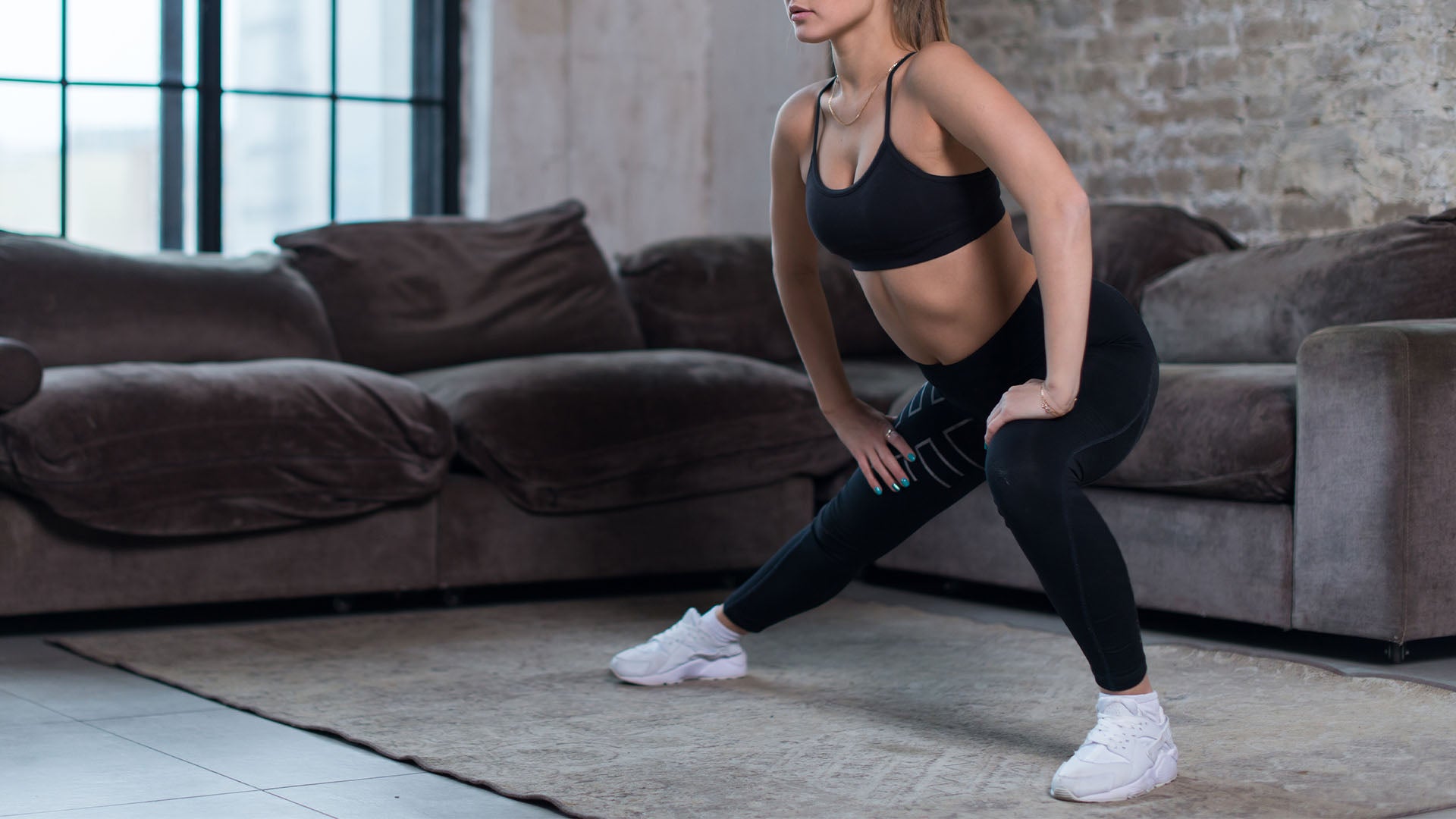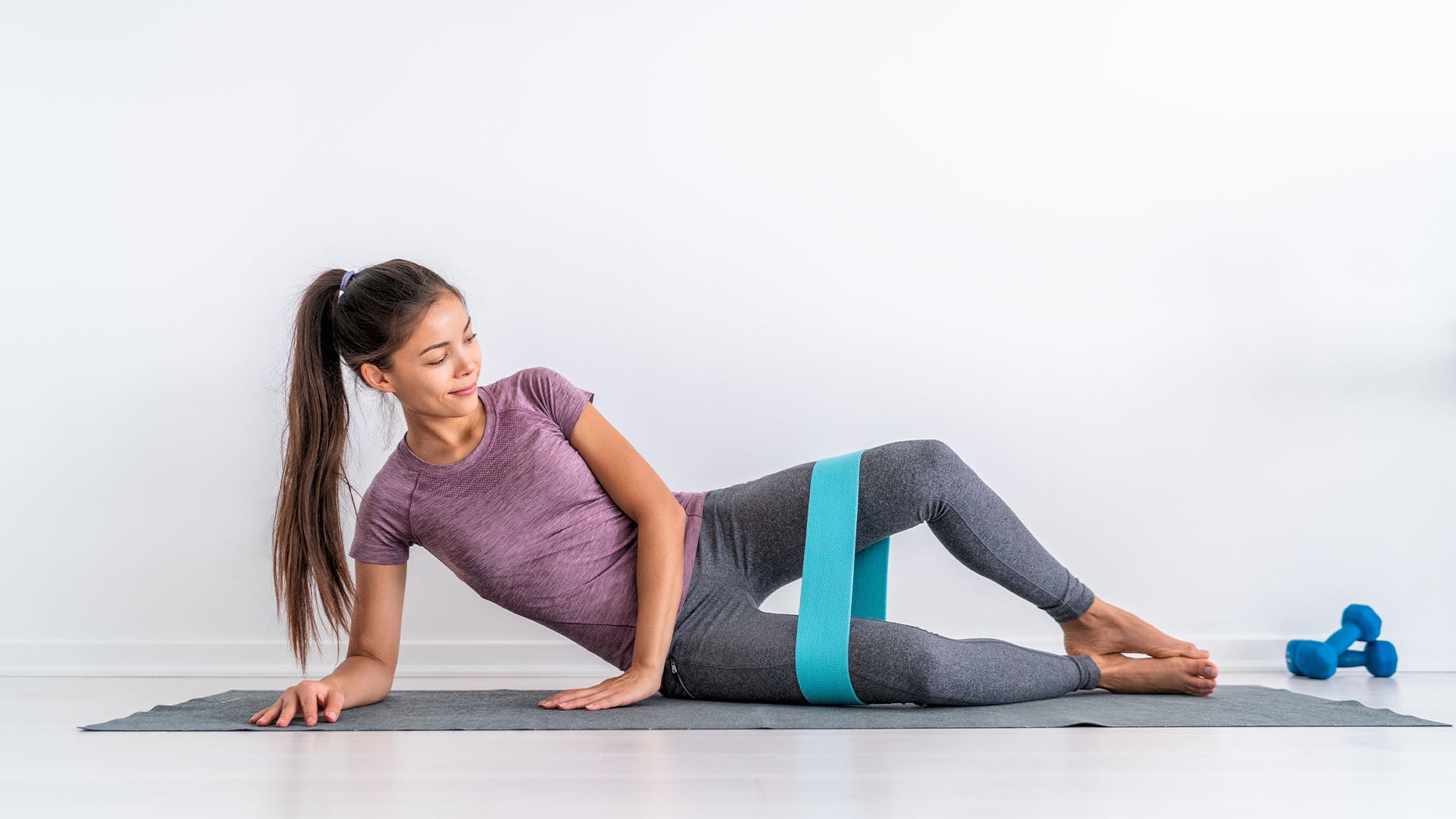Love it or hate it – it’s leg day. And while squats and deadlifts are an essential component of any lower body workout, there are key moves that you might be missing out on if you stick with the same exercises over and over.
Side lunges are an often overlooked component of a great leg or push-day workout. Not only does it work in a different plane of motion from most leg exercises, but it also targets muscles that are underutilized and underdeveloped.
Let’s talk about the muscles that side lunges target, how to do them properly, and similar movements to use in your next leg day workout.
What Is a Side Lunge?

You probably know what a normal lunge is. You’ll place that front knee forward, lunging your body forward and bending that front knee. A front lunge is a great exercise for targeting the quads, but it still activates those glutes and hamstrings. Reverse lunges are great too, and these tend to be a little safer on the knees than a front lunge.
With a side lunge, you’ll take that leading leg out to the side instead of in the front. You’ll still keep your back leg straight and try to make sure your leading knee stays stacked just above your toes.
The main difference between a side lunge and a typical lunge is the muscles worked.
What Muscles Do Side Lunges Work?
Front lunges target the quads primarily while also giving some love to the hamstrings and the glutes. And while side lunges still work these muscles, there is another muscle that it works, which many other exercises are unable to accomplish.
Your hip adductor muscles are on the inside of your thigh, and they’re responsible for bringing your legs closer to the midpoint of your body. They’re not to be confused with your hip abductors on the outside of the thighs, which work to bring your legs away from the center of your body.
The ability to work the adductors is the main benefit of the side lunge in comparison to many other exercises. Neglecting to train these muscles can lead to proper movement and pain in the future, as these muscles are pivotal in helping to keep your body stable when walking or standing on one leg.
Doing side lunges can help you improve at single-leg movements, like single-leg RDLs or pistol squats. Side lunges can also be varied, allowing you to add more weight or increase cardiovascular activation depending on how you choose to complete them.
What Are Some Tips for a Perfect Side Lunge?
The main issue with side lunges is that they are difficult to master, and many individuals struggle to get the most out of this movement because of minor mistakes in form. Here are some tips and tricks to get the most out of this exercise.
Send Those Glutes Back
Many people who do a side lunge naturally want to move their body forward because they’re used to doing front lunges. The problem with this is that it often leads to hyperextension of the knee. Many people who do side lunges will lean forward, sending their leading knee in front of the toes on their leading foot. This can put you at risk of developing injuries down the line.
When doing side lunges, you want to think about sending your glutes to the back of the room, hinging at the hips to ensure that your knee stays stacked above your ankles on the leading leg. Not only does this take tension from the quads and place it on the glutes and hips for proper activation, but it also makes the move safer all around.
Don’t Overstep

Another mistake that can easily be corrected during side lunges is stepping out too far to the side. This can strain the hip adductor muscles and put you at risk of pulling a groin muscle. You don’t need to spread your feet out super wide during a side lunge.
Just think about taking a shoulder-width step out to the side. Drive that booty to the back of the room, and lean forward slightly. This will activate all the working muscles with ease while also keeping you safe throughout the entire range of motion.
Frame the Leg
Adding weights to side lunges is one of the best ways to progress the move and allow your muscles to hit hypertrophy. But how you hold the weights with a side lunge can make a difference.
If you hold two dumbbells, you want to make sure that your hands “frame” your leading leg. In other words, the dumbbells should fall on either side of the leading foot to maintain your body’s center of balance and put maximum resistance on the working muscles.
Many people allow the dumbbells to hang below the waist when doing this movement, preventing the weight from adding resistance to the leading leg. Essentially, it doesn’t work the muscles in the same ways you might think it does.
You can also hold a single dumbbell in a goblet position with both hands up against your chest.
Add Resistance Bands
Using dumbbells and other free weights to a side lunge increases the work required from your quads and your glutes. But if you want to activate those hip muscles even more, you’ll want to put a resistance band around your ankles or knees.
This forces extra work from your adductor muscles to make this move more effective. You can also wear a resistance band and use free weights to up the ante and make this even more challenging.
What Other Exercises Work Similar Muscles?
If you want to focus on your hip adductors a little bit more but are tired of doing side lunges, there are plenty of other options.
Copenhagen Hip Adduction
This is a great hip adductor exercise because it requires no equipment. You only need a low bench or chair to prop one foot on top of. You’ll use your body weight as resistance in order to get those hips firing on all cylinders.
First, place your foot on the bench with your knee slightly bent. Keep your bottom leg under the bench. From there, contract the adductors on your top leg, slowly raising the bottom leg until it touches the underside of the bench. Slowly lower the body back down the floor. Be sure to switch sides after your sets to make sure you’re even.
Band Adduction

If you have a hook or anchor point to place a resistance band over, you can do band adductions. The benefit of this exercise, as opposed to the Copenhagen hip adduction, is that you can easily adjust the resistance by swapping out the band or stepping further away from the anchor point.
To do this exercise, wrap the band around a solid anchor and stand on either side. Wrap the band around your inner, working foot. Bring the band closer to the center of your body, pausing at the midpoint, and then slowly bring it out to the starting position.
You can do this same exercise from a seated position by sitting on a chair or a bench instead.
Sumo Squat
Sumo squats are undoubtedly great for your quads and glutes, but the wide stance helps you work out your adductors in a similar way to a side lunge. You can perform these with a variety of different weights.
To do a wide stance squat, set your feet a little wider than shoulder width with your toes slightly outward. Shift your weight back and lower your hips until your thighs are parallel to the floor. Slowly return back up to the starting position.
In Conclusion
Side lunges are an excellent addition to any leg day programming, mainly because of their ability to work the hip adductor muscles. While they activate the quads and glutes like a typical lunge, the hip adductors on your inner thigh often go undertrained, making this exercise super important.
But the type of exercise you’re doing is only half the battle. You also need to make sure you’re using top-of-the-line equipment. Speede is a revolutionary device that uses powerful AI to adapt to your body’s strength curve. It adjusts the perfect amount of resistance during your rep to ensure that your muscles always exert their maximum force.
The best way to understand how Speede is so revolutionary is to see it for yourself. Book a demo today and start making muscle gains in just a fraction of the time compared to traditional training.
Sources:
Activation of the hip adductor muscles varies during a simulated weight-bearing task | NCBI
Hyperextended Knee: Symptoms, Causes & Treatment | Cleveland Clinic

